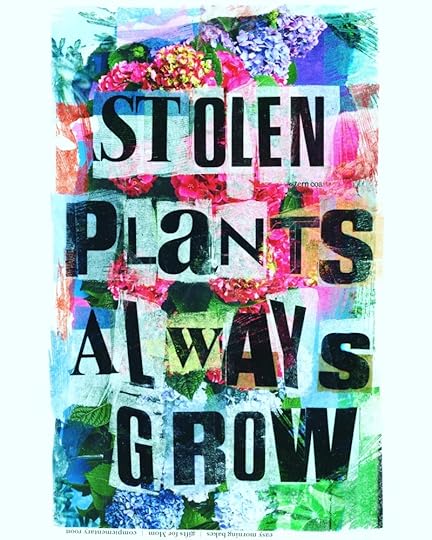Alan Jacobs's Blog, page 122
April 20, 2022
I am as I am. 1999 © Dayanita Singh
The Love Feast
“The Love Feast“ — me in the new issue of Harper’s (paywalled, I think?) on the immediately forthcoming two volumes of Auden’s complete poems:
In almost every reading of Auden, the familiar hinge of his career remains visible — and indeed is emphasized in the division of these two volumes, the first of which ends in 1939 and the second of which begins in 1940. But thanks to [Edward] Mendelson, it is now generally seen to mark a transition, not from excellence to incompetence, but from one kind of excellence to another. And this way of viewing the transition is now typically accepted even by those, such as Heaney, who prefer the earlier verse and lament what was lost.
All the themes of Auden’s later verse converge on a rejection of the heroic and triumphal modes, and the substitution of a different register, that of the repeated and the mundane. In the second half of his career, Auden patiently worked out, in both prose and masterful verse, the implications of his homemade anthropology — his own account of what his friend Hannah Arendt would later call, in a 1958 book, The Human Condition. That anthropology ultimately centers on two core propositions: that we are prone to trust and love what breaks our hearts, and that we are creatures alongside the birds and the social insects, albeit creatures who, as he says in one poem, have “assumed responsibility for time.” We must live simultaneously in nature and history, though we forever are tempted by those prophets who tell us we can only take full refuge in one or the other.

Photograph of Auden by Irving Penn, 1947 © The Irving Penn Foundation
April 19, 2022
The 9 Biggest Myths About Nonfiction Trade Publishing, De...
The 9 Biggest Myths About Nonfiction Trade Publishing, Debunked. These are all spot-on. I would only add that even when you get a larger advance, it’s typically divided into either three or four installments. So, for instance, I’ve had some divided this way:
First part on signing the contractSecond part on delivering a complete manuscriptThird part on publication of the hardcoverFourth part on publication of the paperbackYou can’t “live off your big advance” when you only have a quarter of that advance — or maybe a third (the divisions aren’t always equal) — during the period of writing.
Austin Kleon
Welles and the newspapers
From the Preface to the first volume of Simon Callow’s biography of Orson Welles:
He publicly constructed himself, from the earliest age — my first press clipping is headed ACTOR, POET, CARTOONIST AND ONLY TEN — in a medium that he courted and denounced in equal measure; and the press returned the compliment. Together they concluded a sort of Faustian pact wherein Welles was meteorically advanced by sensation-hungry newspapers, to whom he pandered shamelessly, until at the height of his fame he fell foul of them; saddled with a preposterous reputation and a personality drawn by him and coloured by them, he found himself unemployable, his work overshadowed by his ever-expanding Self. Even his body became legendary, out of control; whatever his soul consisted of protected from the world by wadding. Locked in a personal relationship as complex and curious as that of Lear and his fool, Welles and the newspapers needed and abominated each other in a co-dependency that only his death dissolved. It is no coincidence that his most famous work is the apotheosis of the newspaper film.
An interesting addendum to my argument that one can profitably see Citizen Kane as a comedy about newspapers.
compelling needs
In 1957 Vance Packard published The Hidden Persuaders, his famous book about advertising techniques, in which he claimed that the products advertised, taken together, promised to fulfill eight “compelling needs”:
Emotional SecurityReassurance of worthEgo gratificationCreative outletsLove objectsSense of powerRootsImmortalityHow much has changed? To what degree is the world of social media the inheritor of 1950s advertising as the means by which these needs are fulfilled?
April 18, 2022
Michael L. Budde: This book is not an attempt to convince...
This book is not an attempt to convince people that Jesus would prefer his followers not to use lethal force, even for a good cause. Instead, in many of the chapters that follow, I aim to give Christians a taste of what they’re buying when they affirm the legitimacy of even a little bit of lethal force, even in the most reasonable of cases. They want a Christ that allows them to kill, so I’m giving them especially that, especially when they think they’re affirming something else.
Damn.
two quotations on life beyond self-actualization
The simplest argument against a cultural fixation on the individual getting whatever they want is that it’s entirely unachievable. But the deeper and more important problem is that several thousand years of human progress has advanced in the direction of the common good rather than of the selfish individual. We owe each other things, and sometimes this means sacrificing our own wants and desires to support others. Like bending a little to satisfy the expectations of the woman who gave you life. If a dogged insistence that the individual’s wants are ultimately of less importance than the greater good of the whole is actually a part of Chinese culture, as suggested by this movie [Turning Red], I think that’s something worth defending, not treating like a cartoon villain.
I love WL’s [White Liberals], love ’em to death. They’re on our side. But WL’s think all the world’s problems can be fixed without any cost to themselves. We don’t believe that. There’s a lot to be said for sacrifice, remorse, even pity. It’s what separates us from roaches.
Metafoundry 75: Resilience, Abundance, Decentralization:W...
Metafoundry 75: Resilience, Abundance, Decentralization:
We mostly only close materials loops when it’s ‘economically viable’ to do so. By and large, what that means is that it takes less energy to recycle the material than it does to create it in the first place, which is true for aluminum, steel, and glass, but not for materials like plastics or concrete. But the promise of access to renewable energy is that it changes this equation, putting processes that are intrinsically energy-intensive, like recovering the carbon from plastics for reuse or desalinating seawater to make it potable, on the table. It doesn’t matter how much energy a process needs if it is inexpensive, doesn’t limit the energy available to others for their use, and is non-polluting. There’s a virtuous circle here too: the faster that renewable energy systems are up and running, and the closer we can get to achieving this potential, the more that we can apply that clean energy to repurposing the materials of our current technological systems to build out the physical infrastructures of our new ones. Not beating swords into plowshares, but recycling cars into electric trams. We live on a sun-drenched blue marble hanging in space, and for all that we persist in believing it’s the other way around, that means we have access to finite resources of matter but unlimited energy. We can learn to act accordingly.
I don’t know anyone smarter than Deb Chachra. Please read the whole letter.
April 17, 2022
cross and resurrection
If the cross were the last word in God’s self-revelation, then this first commentary would be the only possible one. If all humankind — even in its best representatives — is exposed here as one murderous treason against its Creator, what future is there but death? What is the point of continuing this futile saga of sin, even with all the adornments of civilization? If the Cross is the end, then there is no future.
But it is not. The resurrection is the revelation to chosen witnesses of the fact that Jesus who died on the cross is indeed king-conqueror of death and sin, Lord and Savior of all. The resurrection is not the reversal of a defeat but the proclamation of a victory. The King reigns from the tree. The reign of God has indeed come upon us, and its sign is not a golden throne but a wooden cross.
Alan Jacobs's Blog
- Alan Jacobs's profile
- 529 followers





